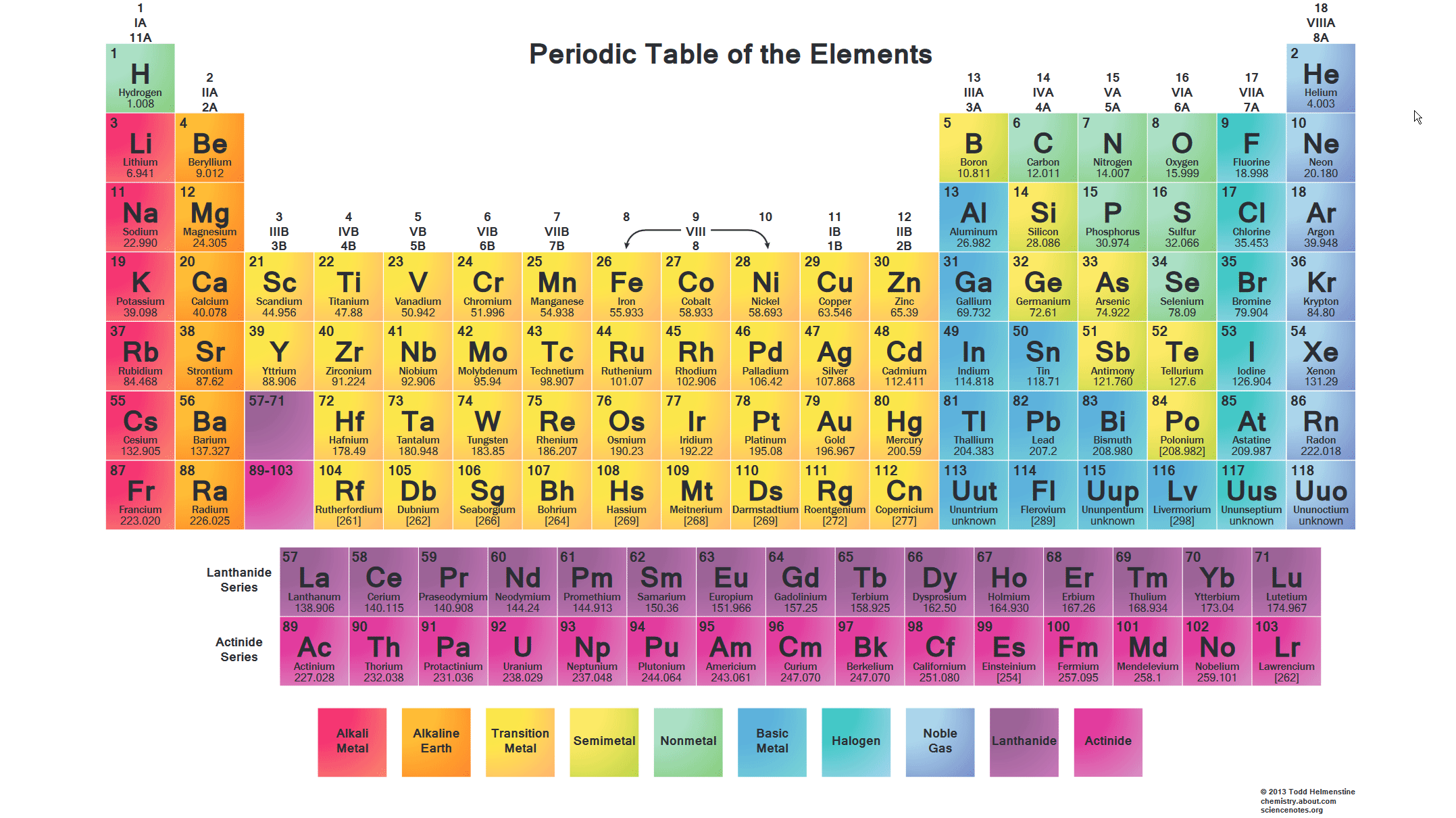The Alkali Metals
The alkali metals are the six elements that make up Group 1 of the periodic table, shown below. They are lithium (Li), sodium (Na), potassium (K), rubidium (Rb), cesium (Cs) and francium (Fr). They are called alkali metals because they all react, often violently, with water to form alkalis or bases, such as sodium hydroxide. The alkali metals are excellent conductors of electricity and heat. They have low melting points, with the lowest being cesium at 28.5oC, the melting point of alkali alloys can be as low as -79oC.
Because of their reactivity all the metals are found as compounds such as sodium chloride (table salt). An interesting exception is atomic sodium gas found about 90km above the earth, formed by ablation of meteors. It is activated sodium that forms meteor tails and it also causes a faint night-time glow in the sky.
Lithium is the lightest known metal. It is typically traded as lithium carbonate, lithium chloride and lithium hydroxide. The main uses of lithium are in batteries, ceramics and glass; lesser uses include greases, flux powders, polymer production and many other uses.
Lithium is produced from spodumene veins in pegmatite intrusives in Australia, Canada, China and several other countries. It is produced from brine operation in several South American countries and from lithium clay in Mexico.
Sodium is the most widely used alkali metal, being mostly used as various compounds although the metal itself is used for heat transfer in some nuclear reactors. Common compounds are salt (NaCl), baking soda (NaHCO3), sodium carbonate (Na2CO3) and caustic soda (NaOH). Tens of millions of tonnes of sodium compounds are used annually.
For example, the US uses over 40Mt of salt annually, most for de-icing highways and as a chemical feedstock. Lesser uses include agricultural and food processing and general industrial use.
Potassium is essential for animal and plant health. Its main use is as a plant fertilizer in the form of potash. Potash refers to a group of water soluble potassium compounds including potassium chloride, potassium sulphate, and potassium magnesium sulphate.
Other uses include potassium chlorate and potassium nitrate used in explosives and nitrate is also used in food preservation. Potassium chromate has a variety of industrial uses, including gun powder and dyes and potassium hydrate is used in detergent manufacture.
Rubidium is soft, deep red in colour and slightly radioactive. The metal and its compounds are used in fibre optics, atomic clocks, night vision devices and geochronology.
The rubidium market is small and it is not traded, The US market is only a few thousand kilograms. It tends to occur along with lithium and cesium minerals in pegmatites and evaporites.
Cesium is soft and gold in colour, it reacts explosively with water. Its primary use in in high pressure and temperature oil drilling, in the form of cesium formate (HCOOCs). Cesium compounds include cesium nitrate, cesium chloride, cesium carbonate, cesium bromide and cesium hydroxide. These compounds havehave many uses such as in photoelectric cells, scintillometers, fluoroscopy equipment, optics and atomic clocks.
It is mainly produced from pollucite, a zeolite mineral that is formed in highly differentiated pegmatites. Pollucite may also contain rubidium and potassium.
Francium is highly radioactive and is the most electronegative of all elements. It is produced by bombarding thorium with protons or radium with neutrons. It has a very short half life and is only occasionally used in scientific research.
Investment in the Australian Listed Space
Given the hysteria about electric vehicles, there are numerous junior companies spruiking their lithium credentials, as well as a handful of producers and developers. Here is a partial list from two years ago. The sector has seen better days and most ASX-listed companies are well off their highs.
A concern is that there is no shortage of lithium worldwide. Although supply is currently tight, this will ease as more developments come on stream. Future price pressure is likely to be downwards.
I am not aware of any ASX companies with sodium exposure.
There are a number of ASX stocks that have potash as a major or secondary project. The main companies are listed below. Two (GXY, ORE) are primarily lithium producers.
| ASX Code | Market Cap ($M) | Price Performance | Project |
| AMN | 144 | Holding about current highs | Mackay Potash, NT/WA border |
| APC | 19 | At 12 month lows | Lake Wells Potash, WA |
| BCI | 53 | Near 12 month lows | Carnegie potash, WA |
| DNK | 235 | Near 12 month lows | Colluli Potash, Eritrea |
| GXY | 1,116 | 12 month mid-point | Lithium producer, Potash Argentina |
| HFR | 215 | 12 month low | Muga Potash, Spain |
| KPC | 16 | 12 month low | Satimola potash, Kazakstan |
| K2P | 138 | Suspended since Nov 2017 | Sintoukola potash, DR Congo |
| ORE | 1,123 | 12 month mid-point | Salar de Olaroz Li & K, Argentina |
| RWD | 24 | 12 month low | LD potash, WA |
| SO4 | 85 | Near 12 month highs | Lake Way potash, WA |
| KLL | 54 | Near 12 month highs | JV with BCI |
Performance of the sector is highly variable but it is still worth a look, as the outlook for potash prices is positive.
The only listed exposure to cesium is PIO (MCAP $30M, share price 12 month mid-point). In addition to a cesium resource, the same intrusive pegmatite is prospective for lithium, rubidium and microcline. A very interesting, highly differentiated pegmatite, the company is worth a review.

